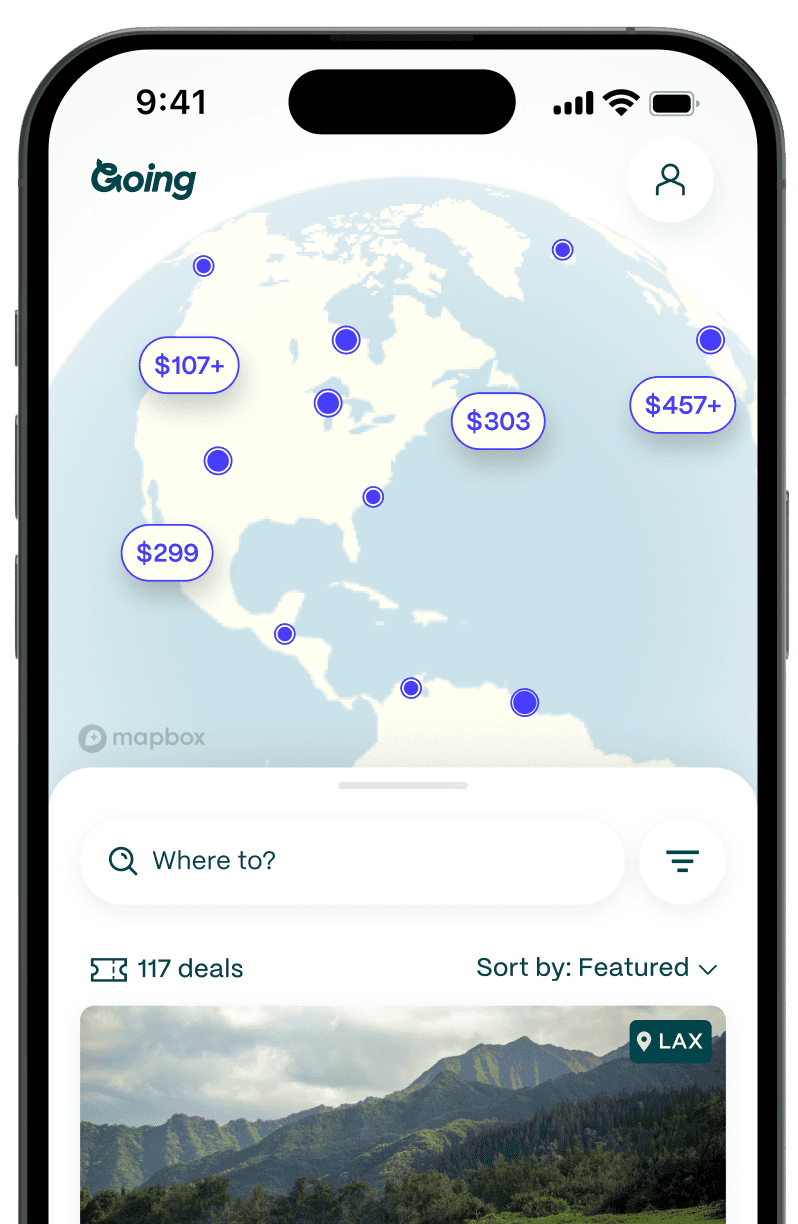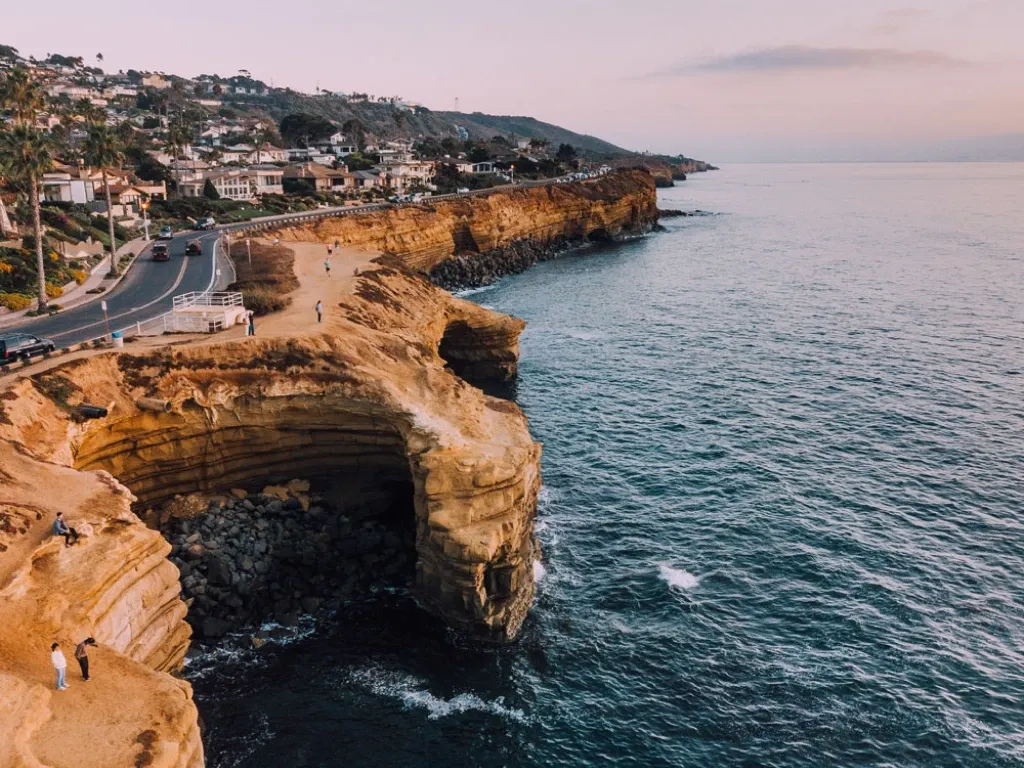
San Diego: The West Coast Surf Capital Where Bigger Burritos Are Better
With 17 miles of coastline and about 200 days of sunshine per year, San Diego is California’s perfect-weather getaway, but America’s Finest City is far from a one-note beach town. Located almost as close as you can get to Mexico without actually crossing the border, it has a rich Mexican-American heritage, influences of which are evident across its architecture and culinary landscape. While its credibility as a foodie town has long been overshadowed by neighboring LA, local chefs, farms, and fishermen are fueling a now-white-hot, more-grown-up food scene that is gaining nods from the Michelin and James Beard organizations.
More than its historic Gaslamp Quarter and new waterfront music venue, The Rady Shell at Jacobs Park, San Diego has 52 distinct neighborhoods. Standouts include upscale Mission Hills with its Craftsman-style homes and low-fi hipster enclave Golden Hill. Throw in hidden art hubs, peaceful gardens, world-class museums, and a generous slice of laid-back surf culture, and it’s easy to see why the eighth-largest city in the US appeals to such a wide array of travelers.

The birthplace of California
Iberian maritime explorer Juan Rodríguez Cabrillo claimed to have discovered San Diego Bay in 1542, and members of a later Spanish expedition established a military fort (Presidio de San Diego) and California’s first mission in 1769. However, it was the Kumeyaay Indigenous people who were the first to settle the area, more than 10,000 years before the arrival of the first European explorers. In fact, the Kumeyaay village of Cosoy gradually expanded into a settlement that became the Old Town area and the city of San Diego that grew around it.
Considered the birthplace of California, the six-block (give or take) Old Town San Diego State Historic Park features preserved and restored adobe structures and landmark buildings, including San Diego’s first schoolhouse and the purportedly haunted Whaley House. A short drive away on the scenic Point Loma Peninsula, Cabrillo National Monument commemorates the landing of Juan Rodríguez Cabrillo.

A celebration of Mexican-American heritage
Nowhere is Chicano heritage more brilliantly celebrated in San Diego than Barrio Logan, located just south of downtown and bordered by the East Village. Established in the 1920s by refugees of the Mexican Revolution, the neighborhood became rooted in activism with social justice protests in 1970 when locals and students fought for park space beneath the Coronado Bridge. Today, its Chicano Park is a designated California Cultural District with dozens of murals adorning freeway pillars that depict colorful messages of community, strength, and struggle; binational muralists like Panca also exhibit at neighborhood galleries.
In addition to art, there are other ways to experience Chicano culture within the city. La Vuelta’s car cruise series provides a taste of the lowrider lifestyle—the Mexican-American subculture of cruising “low and slow” in a customized classic car with bouncy hydraulics and bright paint jobs. Exploring the coffee shops and boutiques along the main drag, Logan Avenue, is another great place to start. Just get in line early for lunch at local favorite, no-frills taqueria Las Cuatro Milpas, which has hand-rolled its masa every morning since 1933.

Balboa Park: The cultural heart of San Diego
When the Panama Canal opened, San Francisco was officially selected to host its opening ceremony. However, San Diego—which would be the first US port-of-call for ships sailing north on the Pacific coast—decided to hold its own exposition, which ran from 1915–1917. Balboa Park, expansive and centrally located, was the perfect setting. Mediterranean and Spanish Colonial Revival–style buildings were constructed inside the park for the occasion, including the Spreckels Organ Pavilion (the world's largest fully outdoor pipe organ), the ornate California Building, and the Cabrillo Bridge—Southern California's first cantilevered, multiple-arched bridge, which enters the park from the west.
Now designated a National Historic Landmark, Balboa Park has been a cultural and recreational hub in San Diego for generations. Larger than New York’s Central Park (which measures 842 acres to Balboa’s 1,200), it’s home to the world-famous San Diego Zoo, walking trails, lush canyons, and multiple gardens (including a former nudist-colony-turned-butterfly-garden); the park’s museums span natural history, photography, and the arts. Built for the 1935–1936 California Pacific International Exposition, The Starlight Bowl has welcomed world-renowned artists over the years, including Ella Fitzgerald and The Rolling Stones.

(Once) Tuna Capital of the World
In 1902, a sardine shortage drew fishermen of varying nationalities to San Diego in search of a new catch: tuna. By the 1920s, San Diego's working waterfront neighborhood Little Italy was home to several canneries and a large fishing fleet; within three decades, it was known as the Tuna Capital of the World, with tuna fishing being San Diego's third-largest industry behind the Navy and aerospace. However, foreign competition, stricter environmental regulations, and the construction of the I-5 led to Little Italy's economic downfall throughout the ‘70s and ‘80s.
Tuna fishing in San Diego was all but over when 2015 legislation created the Pacific to Plate bill allowing commercial fishermen to sell their catches directly to consumers; this paved the way for the Tuna Harbor Dockside Market. Located a few blocks from Little Italy on the Embarcadero, it’s where fishermen sell only locally caught seafood—think yellowtail, sea urchin, spot prawns, and California spiny lobster—each Saturday at 8am sharp.
Now gentrified, the walkable 48-square-block Little Italy neighborhood northwest of downtown reinvented itself as a bustling small business district and all-star dining destination thanks in part to celebrity chefs like Brian Malarkey and Richard Blais who opened restaurants along Kettner Boulevard, aka Top Chef Alley. Visitors and locals regularly descend on the Little Italy Mercato (open Wednesdays and Saturdays) to shop for fresh produce and gourmet goods, as well as the European-style Piazza della Famiglia, where live music performances—best paired with a scoop of gelato from the Little Italy Food Hall—draw a crowd most evenings. Patio cafes and urban wineries dot the streets, along with old-school Italian spots like Filippi's Pizza Grotto, which has been serving pies since 1950, and restaurant and gourmet deli Mona Lisa Italian Foods, in operation since 1973. Another neighborhood institution is classy dive Waterfront Bar & Grill; said to be San Diego's oldest tavern, it opened in 1933, the year after Prohibition was repealed.
Eat like a local
Just as Maine has its lobster roll and Philadelphia its cheesesteak, San Diego has its own defining delicacies: fish tacos and California burritos. Arguably tied as two of the city’s best-known dishes, they are essential to any San Diego (particularly post-surf) experience. Fish tacos are thought to have originated in the 1960s across the border in the coastal city of Ensenada and made the jump to San Diego menus by the ‘80s. There are countless go-tos today, but local favorites include the Seafood La 57 truck in South Park, TJ Oyster Bar in Bonita, and El Pescador Fish Market in La Jolla. When ordering Baja-style, expect a gustatory delight of batter-fried yet still delicate fish topped with shredded green cabbage, chipotle crema, and a squeeze of fresh lime.
As for the California burrito, there are several claims about who created the first one: Some say it was Santana’s, and others believe it was Roberto’s Taco Shop. Regardless, the flavorful carne asada and French fry-stuffed tortilla-wrapped burro (which translates to “donkey,” whereas your standard burrito translates to “little donkey”) is best paired with plenty of fiery salsa roja. Standout spots include Adalberto’s Mexican Food in Sherman Heights, Roberto’s in National City, and Super Sergio’s drive-through in the Convoy District.

Surfin’ USA
Surfing roots run deep in San Diego. Hawaii native George Freeth and fellow Hawaiian swimmer-surfer Duke Kahanamoku introduced and popularized the sport here with surfing demonstrations in the early 1900s. The palm-frond-covered surf shack at Windansea Beach in La Jolla has been a San Diego landmark since 1946; a surf competition there in the early ‘60s gave birth to the Windansea Surf Club, a nonprofit that hosts competitions and has included big-name members, like Kelly Slater. Bruce Brown's influential surf movie The Endless Summer was screened at gyms and auditoriums around Southern California, including in San Diego, from July–August 1965 before being picked up for mainstream distribution the following year.
Surfboard shapers design and build surfboards, and two of San Diego's most innovative—Rusty Preisendorfer and Larry Gordon—helped transform the industry, founding international surf brands (Rusty and Gordon & Smith, respectively). Gordon was integral in getting Tourmaline Surfing Park, which sits on the southern edge of La Jolla, designated America's first surfing park. San Diego has produced notable surfers over the decades, too, including big-wave pioneer Pat Curren (father to three-time world champion Tom Curren) and Surfer's Hall of Fame member and local legend Rob Machado, who can sometimes be spotted in the lineup at Cardiff Reef, a famous righthander wave at the southern end of Cardiff State Beach.
Listen closely to The Beach Boys hit "Surfin' U.S.A.", and you'll hear mention of another iconic break, Swami’s, located just a few miles up the coast in the beachside community of Encinitas. The word swami is Hindi for a religious male figure, and the break was named after the clifftop spiritual center dedicated to Swami Paramahansa Yogananda that sits above the point.
Craft beer capital of America
While you may think of Denver, Portland, or San Francisco when you hear craft beer, San Diego is the proud—official—bearer of the title Capital of Craft. Early pioneers Karl Strauss Brewing Company and Ballast Point Brewing Company helped put San Diego on the modern craft beer map with their respective Red Trolley Christmas Ale and Sculpin IPA. (Note: Several San Diego County breweries cracked the top 50 most popular craft breweries in the US by the American Brewers Association in 2022. See them here.)
Well beyond the big names, San Diego County is home to more than 150 breweries serving up distinctive specialty beers and unique tasting experiences. AleSmith’s San Diego Pale Ale .394 is a perennial crowd-pleaser, and Eppig’s German-inspired beers are a treat when drunk from its waterfront biergarten beside the America's Cup Harbor in Point Loma. To sample pours from the city's first Mexican American–owned brewery, head to Border X Brewing in Barrio Logan.

San Diego on screen
San Diego landmarks have appeared in a number of movies—the historic Hotel Del Coronado in Some Like It Hot with Marilyn Monroe and Balboa Park’s California Building in the opening credits of Citizen Kane, to name a few. However, there are two movies where the setting is undeniably, quintessentially San Diego: Top Gun and Almost Famous.
While the real-life Top Gun program has since moved to Nevada, San Diego’s Naval Air Station (NAS) Miramar—known for years as Fightertown U.S.A.—solidifies the city’s long-standing reputation as a military town. Scenes from the 1986 movie Top Gun were shot there. Fans flock to filming locations Kansas City Barbeque (the “Great Balls of Fire” piano scene) and the “Top Gun” house, now a retro pie shop in Oceanside. NAS North Island backdropped key parts of the long-awaited sequel Top Gun: Maverick, including the new beach volleyball scene. And while real-life San Diego–based aircraft carriers the USS Abraham Lincoln and USS Theodore Roosevelt also starred, they aren’t open to the public; however, it is possible to tour the USS Midway Museum. The funeral for Tom “Iceman” Kazansky was held in the Fort Rosecrans National Cemetery on Point Loma.
Alternatively, Cameron Crowe’s semi-autobiographical story Almost Famous was inspired by his teenage exploits as a budding rock journalist growing up in San Diego. The film opens on Newport Avenue in Ocean Beach by the long-closed Strand Theatre, and the opening venue (where central character William Miller first meets the band Stillwater) was shot at the San Diego Sports Arena, now the Valley View Casino Center on Sports Arena Boulevard. The hilltop campus of the now-closed University of San Diego High School recreated the scene where a 15-year-old Cameron saw his future as a rock critic. You can also catch a glimpse of Balboa Park during the credits.
Good to Know
Is San Diego expensive?
San Diego is a relatively expensive place to visit. A three-star hotel runs around $180 per night, though you can expect to pay upwards of $300 for a four-star hotel during the summer. Conversely, you can find a hostel bed for about $55; rates rise closer to the beach. For dinner in a mid-range restaurant, expect to pay $30 for an entree. For cheaper meals (like hole-in-the-wall tacos), you can easily fill up for $15. LEGOLAND California and SeaWorld tickets can cost $84–$100, but if you skip those, it’s possible to have a great time for under $150 per day.
Best time to visit San Diego
Despite almost year-round mild weather, sunshine isn’t guaranteed in San Diego. From May–June (locally dubbed May Gray and June Gloom), a thick marine layer lingers along the coast, sometimes for the entire day. July–September tend to be the hottest months, when temperatures break 80°F and tourist numbers climb. The weather often stays warm from September–November, making it a nice alternative with less crowds than the summer season. San Diego sees the most rainfall during winter, specifically in February, when its coastal canyons and eastern mountains are at their lushest.
What languages are spoken in San Diego?
English is the main language in San Diego, but because of the city’s proximity to Mexico, about 30% of the population is Hispanic/Latino and 38.8% of households speak a language other than English.
San Diego with kids
With hiking trails, swimming beaches, kayakable sea caves, top amusement parks like LEGOLAND California and SeaWorld, and the world-famous San Diego Zoo, the city has many attractions and activities for families with kids of all ages. The Birch Aquarium at Scripps Institution of Oceanography is another excellent option, while Balboa Park is home to numerous museums, including the San Diego Air & Space Museum and Fleet Science Center.
San Diego public transportation
San Diego’s public transit system is somewhat limited compared to other major American cities. The COASTER commuter train connects downtown and Old Town with beachfront communities like Encinitas in North County. While the bus and trolley provide good coverage of central districts from key locations like the San Diego Convention Center, they’re not so great at connecting you to outlying suburbs, which makes it challenging to rely solely on public transportation to get around. A rental car is recommended to make the most of a trip and explore San Diego more efficiently.
Is San Diego safe?
The US ranks #131 out of 163, according to Vision of Humanity’s Global Peace Index. With a crime rate lower than the national average, San Diego is one of the safest metropolitan cities of its size in the US. While it is generally safe to walk around at all hours of the day, it’s best to exercise caution when walking at night, as you would in any city, particularly around the downtown East Village neighborhood.
For LGBTQ+ equality, California ranks #8 in the US with a score of 83 out of 100, according to Equaldex's LGBT Equality Index. San Diego is considered one of the top LGBTQ+-friendly destinations in the country. Its uptown neighborhood, Hillcrest, is the heart of the LGBTQ+ community and the setting of events throughout the year, including the San Diego Pride parade. Next door, North Park is another neighborhood popular with LGBTQ+ visitors and locals.
Getting to San Diego
- Main airport: SAN
- Average Going deal price for cheap flights to San Diego: $196 roundtrip
More destinations west of the Mississippi:
Last updated December 19, 2023
Articles you might like
View All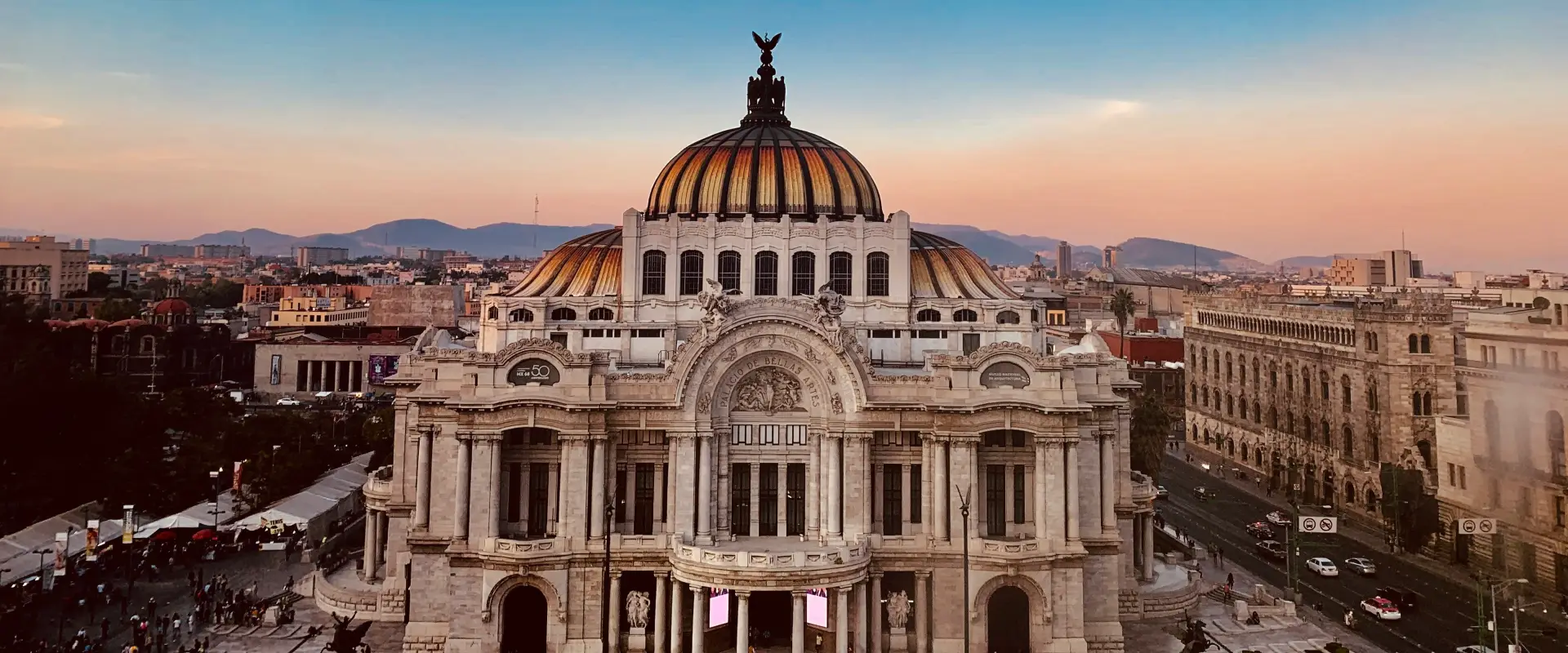
Our Favorite Things to Do in Mexico City: Hidden Gems and Must-See Spots in the Heart of the Capital
Dec 17, 2025
9 min read
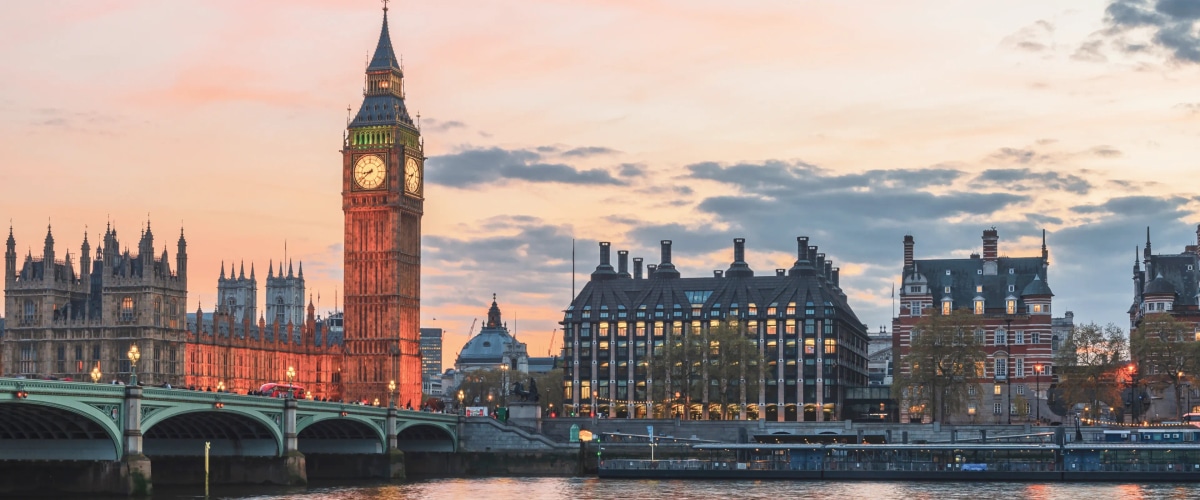
Things To Do In London: Classic & Hidden Spots For a Complete Trip
Dec 16, 2025
13 min read
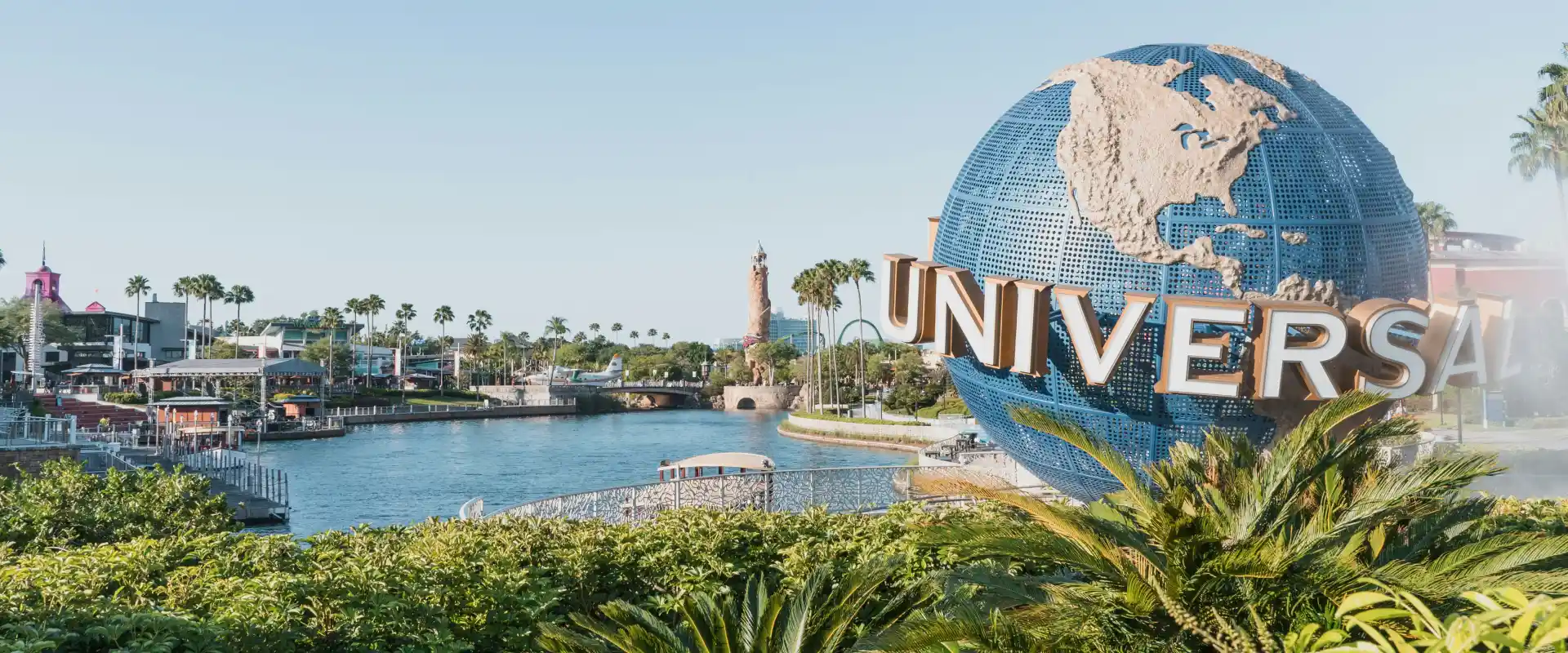
Things To Do in Orlando: The Ultimate Guide
Dec 9, 2025
10 min read



